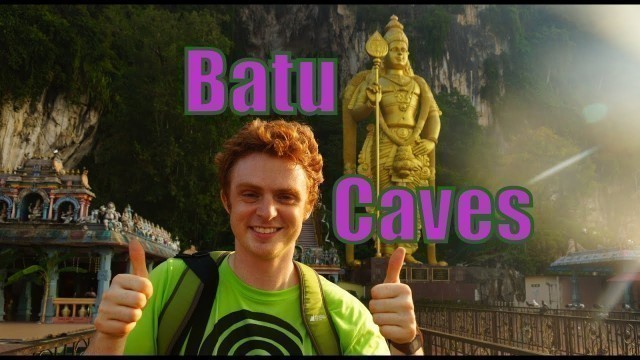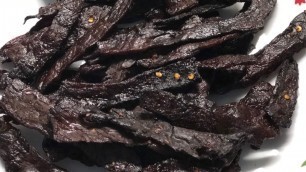

'This is a travel video of us visiting the Batu Caves and then feasting on a glorious Indian meal in an area that is 13 km north of Kuala Lumpur, Malaysia. Visiting the temples at an early time of the day turned out to be blessing as we beat all of the tour groups to the Batu Caves. Prior to climbing the 272 steps we noticed a huge flock of pigeons feeding nearby. Monkeys were everywhere scurrying about and generally being cheeky while eating, fighting and breeding. Once to the top we noticed quite a few chickens and rosters feeding inside. After a short time we could hear Hindu traditional music from several talented musicians. Finally, we rewarded ourselves with a glorious Indian feast. The final clip is of a time lapse sequence near the main entrance of the Batu Caves. GEAR WE USE Olympus OM-D E-M5 II: http://amzn.to/1OchS7t Canon G7X: http://amzn.to/1YdjsYX Olympus 14-150mm II Lens: http://amzn.to/1Y79zeM Rode Video Mic GO: http://amzn.to/1WDKtVM Joby Gorilla Pod: http://amzn.to/1PgoY5F SanDisk 16GB Extreme Pro: http://amzn.to/25KEErs SOCIAL MEDIA & TRAVEL BLOGS AUDREY: blog: http://thatbackpacker.com/ instagram: https://www.instagram.com/thatbackpacker/ facebook: https://www.facebook.com/thatbackpacker twitter: https://twitter.com/ThatBackpacker SAMUEL: blog: http://nomadicsamuel.com/ facebook: https://www.facebook.com/nomadicsamuel twitter: https://twitter.com/NomadicSamuel instragram: https://www.instagram.com/nomadicsamuel/ Batu Caves (Tamil: பத்து மலை), is a limestone hill, which has a series of caves and cave temples, in the Gombak district, 13 kilometres (8 mi) north of Kuala Lumpur, Malaysia. It takes its name from the Sungai Batu or Batu River, which flows past the hill. Batu Caves is also the name of the nearby village. The cave is one of the most popular Hindu shrines outside India, dedicated to Lord Murugan. It is the focal point of Hindu festival of Thaipusam in Malaysia. The limestone forming Batu Caves is said to be around 400 million years old. Some of the cave entrances were used as shelters by the indigenous Temuan people (a tribe of Orang Asli). Batu Caves was promoted as a place of worship by K. Thamboosamy Pillai, an Indian trader. He was inspired by the \'vel\'-shaped entrance of the main cave and was inspired to dedicate a temple to Lord Murugan within the caves. In 1890, Pillai, who also founded the Sri Mahamariamman Temple, Kuala Lumpur, installed the murti (consecrated statue) of Sri Subramania Swamy in what is today known as the Temple Cave. Since 1892, the Thaipusam festival in the Tamil month of Thai (which falls in late January/early February) has been celebrated there. Wooden steps up to the Temple Cave were built in 1920 and have since been replaced by 272 concrete steps. Of the various cave temples that comprise the site, the largest and best known is the Temple or Cathedral Cave, so named because it houses several Hindu shrines beneath its high vaulted ceiling. Rising almost 100 m above the ground, the Batu Caves temple complex consists of three main caves and a few smaller ones. The biggest, referred to as Cathedral Cave or Temple Cave, has a very high ceiling and features ornate Hindu shrines. To reach it, visitors must climb a steep flight of 272 steps. At the base of the hill are two more cave temples, Art Gallery Cave and Museum Cave, both of which are full of Hindu statues and paintings. This complex was renovated and opened as the Cave Villa in 2008. Many of the shrines relate the story of Lord Murugan\'s victory over the demon Soorapadam. An audio tour is available to visitors. Batu Caves serves as the focus of the Hindu community\'s yearly Thaipusam (Tamil: தைபூசம்) festival. It has become a pilgrimage site for not only Malaysian Hindus, but Hindus worldwide from countries such as India, Australia and Singapore. A procession begins in the wee hours of the morning on Thaipusam from the Sri Mahamariamman Temple, Kuala Lumpur leading up to Batu Caves as a religious place. Batu Caves is easily reached by Komuter train using the Batu Caves-Port Klang Route, costing RM 2 for a one-way journey from KL Sentral. Batu Caves may also be reached by bus 11/11d from Bangkok Bank Terminus (Near to Puduraya Terminus) or bus U6 from Titiwangsa: http://en.wikipedia.org/wiki/Batu_Caves This is part of our Travel in Malaysia series. We\'re making a series of videos showcasing Malaysian culture, arts, food, religion and people. Proudly presented by: http://nomadicsamuel.com , http://smilingfacestravelphotos.com , http://thatbackpacker.com & http://backpacking-travel-blog.com All photos and video taken by Samuel Jeffery (Nomadic Samuel) and Audrey Bergner (That Backpacker). This video features the song \'\'Latin Industries - Kevin Macleod\" available under a Creative Commons Attribution-Commercial license.'
Tags: vlog , Travel , Malaysia , time lapse , kuala lumpur , monkeys , Caves , Kuala Lumpur travel video , cheeky , pigeons feeding , batu caves , Malaysia Tourism , travel in malaysia , Things to do in Kuala Lumpur , thaipusam , Travel in Kuala Lumpur , Malaysian culture , 272 steps , Visiting Batu Caves , Malaysia Batu Caves , Kuala Lumpur Batu Caves , limestone hill , monkeys at the Batu Caves , Hindu Shrine , Hindu music , Cathedral Cave , Temple Cave , Kuala Lumpr Attractions , attractions in Kuala Lumpur
See also:





!['[]Hot Food[]ft Afton Family (minus Elizabeth)[] Gacha Hop-Hop[] (PLZ READ PINNED COMMENT)'](https://cdn-img01.food2blog.com/images/44-m/138/1385116_m.jpg)











comments